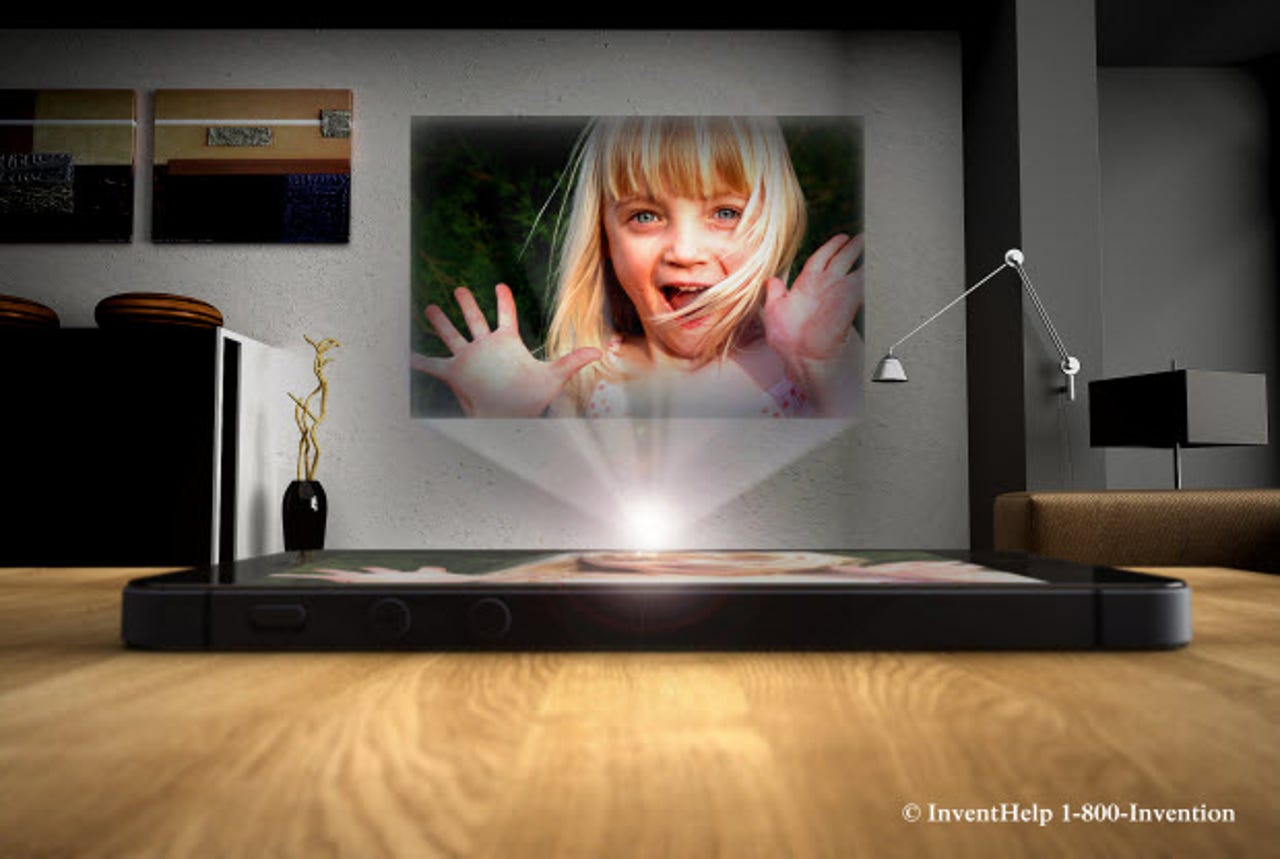The iPhone of the future

Tech pundits expend a lot of effort trying to predict what new technologies Apple will pack into its next flagship smartphone. One method of reading the tea leaves and getting some ideas as to what might be on the horizon is to delve through the patents database and see what patent applications Apple has made to the U.S. patent office.
This is exactly what Nickolay Lamm of InventHelp has done. He, along with the help of a graphic designer, has picked out four Apple patents and created renders of how these innovations might look if integrated into the current iPhone 5 handset.
The following are all based on patent Applications submitted by Apple over the past couple of years.
Projector
This patent application outlined the integration of a mini or pico projector into iOS devices. While there isn't much that's sexy about projectors, the application also shows how the projector could also be used to interpret shadow and silhouette gestures, a feature that could be handy in darkened presentation rooms.

By combining gestures with the projector, to could be possible for two iOS devices to interact via the projector. For example, with two projectors in operation, Apple suggests that the image displayed on one could be moved to another using gestures.
The patent application also suggests that two iOS devices could work in unison to display a single, large image.
Aside from business applications, the projector could be used to display video, TV and even photos on a grand scale.
Smart Bezel
While Apple has made the screen significantly bigger on the iPhone 5, there's still an awful lot of bezel space that isn't being utilized. This patent application sees the bezel being transformed into a secondary touchscreen display.
The smart bezel patent application is an interesting one because it offers Apple a way to do something useful with all that wasted space around the screen. In the patent application, Apple suggests that it could be used to display virtual buttons. These buttons could move depending on the orientation that the device is held.
The patent goes on to suggest that the virtual buttons could be applications specific, or even location specific, and appear and disappear as required, eliminating clutter while at the same time providing functionality as required.
E-Paper
While the iPhone 5 glossy retina display is ideally suited to displaying photos and videos, it's not so good for text. This is where e-paper displays -- such as the one found on Amazon's Kindle ebook readers -- come into their own. This patent application shows how Apple could combine a standard video display and add an e-paper layer to it that users could switch to when required.
The patent application goes on to show how certain sections of the screen could switch to e-paper, while the rest remained glossy.
The hybrid screen idea is an interesting one because a display that could switch between regular to e-paper mode depending on the content displayed would consume a lot less power because the e-paper portion would only refresh when the content changes.
Transparent Display
This is an augmented reality patent that uses the iPhone's camera to display live video on the display, and then overlaying information on the display.
The patent application vision for augmented reality is an interesting one. Imagine being at a museum, showroom or on holiday. You see something and you want more information on it. You whip out your iDevice and point it at the object, and the screen displays what you are looking for, but on the screen is also information about what you are looking at.
Image source: Nickolay Lamm/InventHelp.